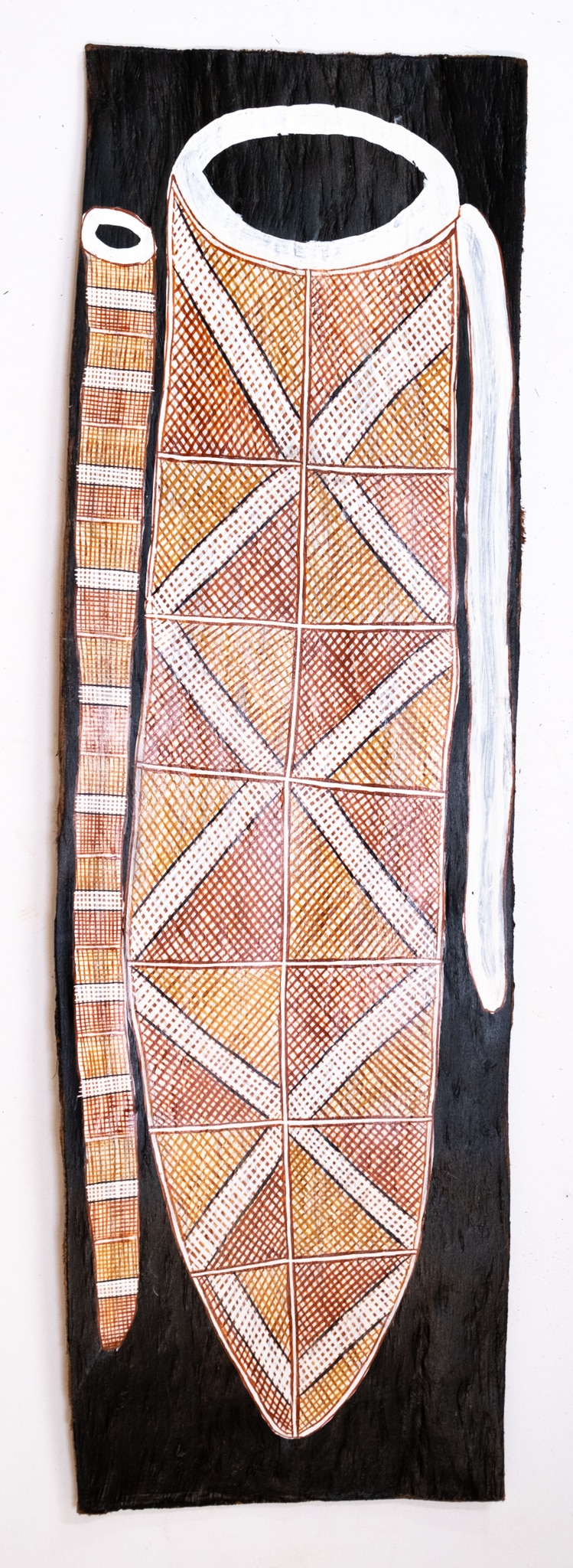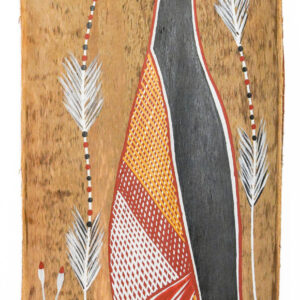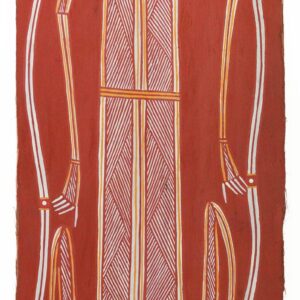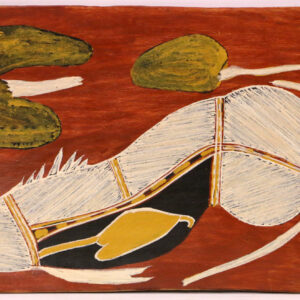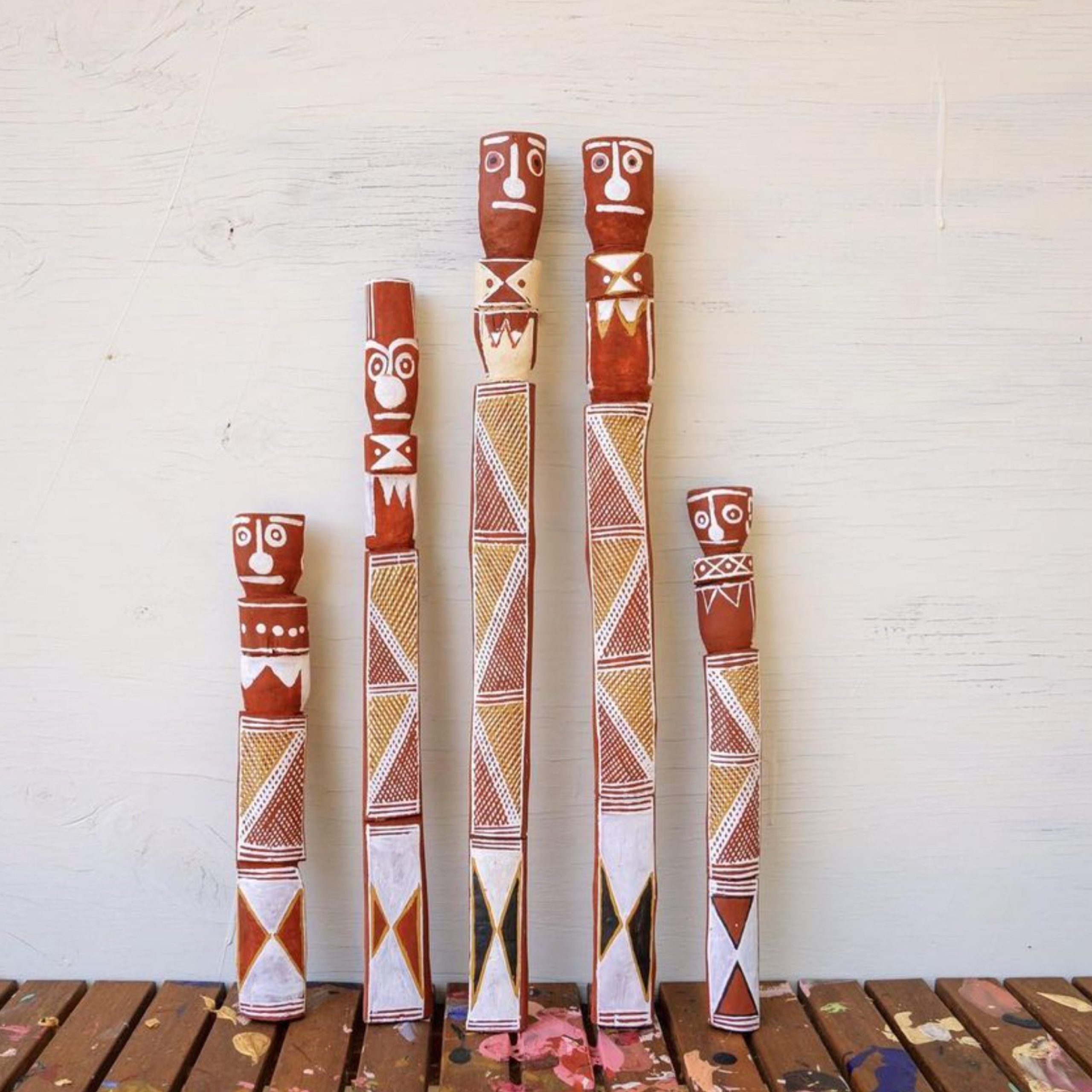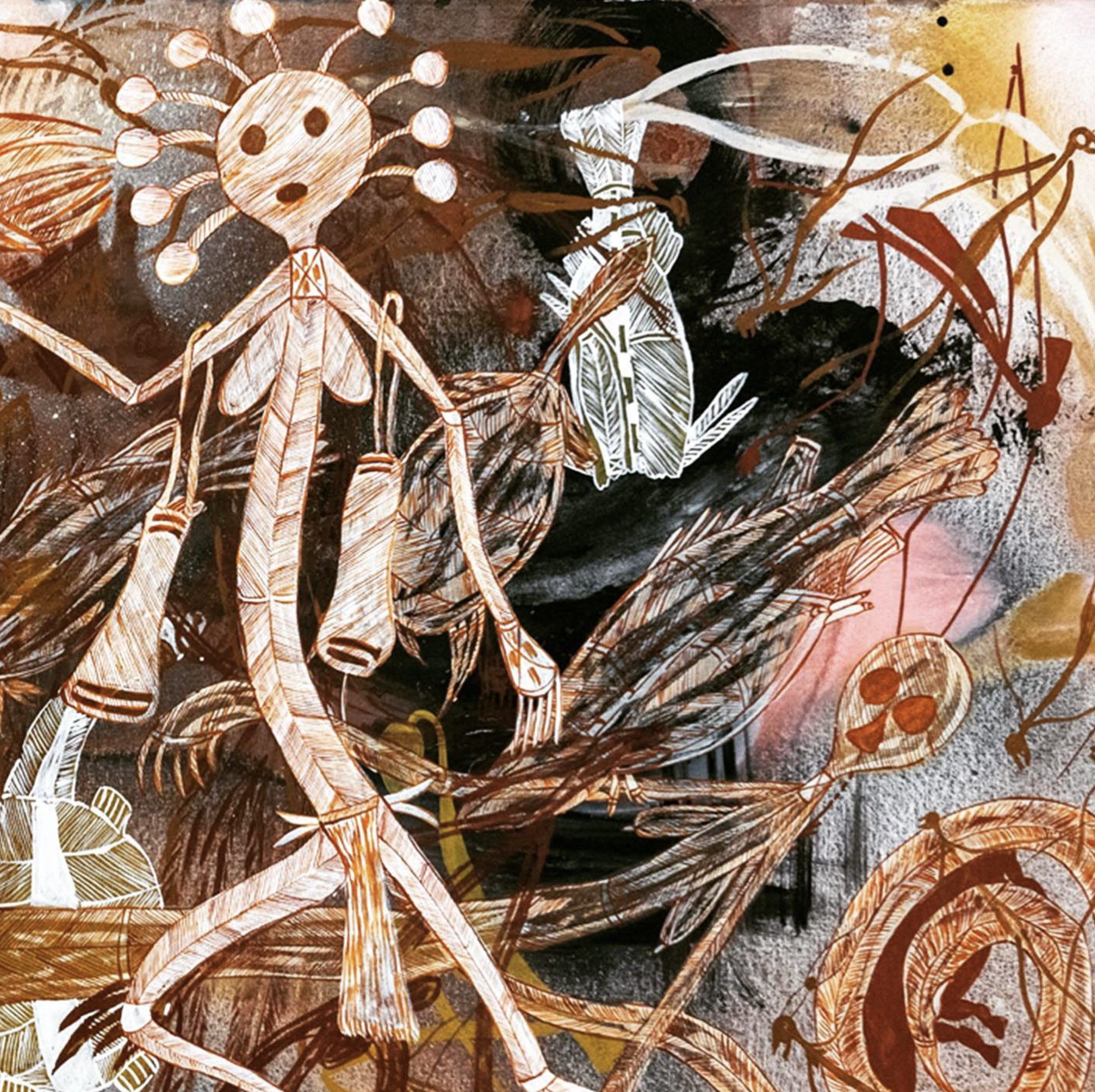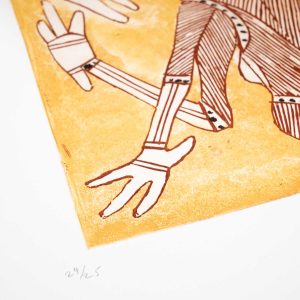$360.00
1 in stock
In the old days, people used banyan root fibres and kurrajong bark fibres to make string for fish traps. The framework of the conical trap was made with thicker bush cane, such as Flagellaria indica (known as karrawukka, midjakkorr or bardedde). The mouth of the fish trap was made with inward-facing canes, so fish could push in but not escape again. The traps could be up to several meters long. Often a fence would be constructed across a creek, with the trap in the center to force the fish in. Pieces of yam might also be placed in the trap to entice fish. They could be left out overnight or for a couple of days. When people brought the trap in, the conical end could simply be untied and the fish distributed.
Manbu mandjabu korroko dabborrabbolk birrimangi kunyarl kore manbornde mandedjmad kunyarl dja kore kundulk manbudbud kunyarl. Wanjh birribokdengi kunyal birrimarnbuni wanjh mandjabu birrimarnbuni. Birridjuhkeyi kore kukku wanjh djenj kumrey ngimerreni kore mandjabu wanjh birrimangi nawern djenj.
ARTIST Johnan Dooley
FURTHER DETAILS
Size 24 x 79 cm
Medium Acrylic on Bark
Catalogue # 82102344
view more Bark | Johnan Dooley

